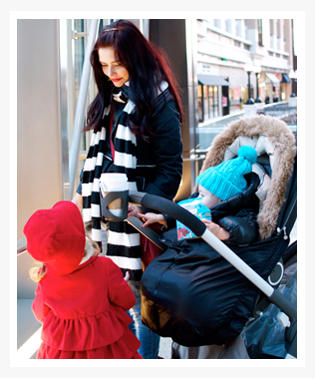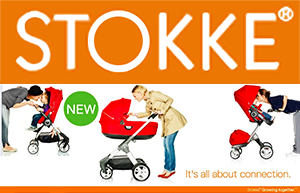I found this article and I laughed all the way through - true, true, true! Life at it's most real! I could relate with every single one of the mothers, and admire them all. Yes, I have four kids, and still continue my professional career, but my freelancing does not compare to their top of the list company's contract - a lot of demand, very little pay and VERY crazy schedules. This is when you really know you live your dream - because you are willing to do the work for free just because you love it.
Ballet class. Barre.
NEW YORK — The no-nonsense stagehands at the Metropolitan Opera House did a double take on a recent Friday morning. A strange sound, not attributable to any known composer, drifted through the air. It was the lyrical giggles of small children.
"Hey," one of the men shouted in a Bronx bellow, "The Babies are here."
Work stopped. The stagehands put down their hammers and saws. Their faces softened into broad smiles as the Babies, as this trio of lively little boys is known throughout the Met, glided across the great stage in the arms of their mothers, three dancers with American Ballet Theater.
Ballet and babies do not have much common history in this country. Indeed, when the great Natalia Makarova became pregnant several years ago, her fans and fellow dancers alike were shocked and fearful: Would she ever be strong enough to dance "Swan Lake" again? Would she ever be thin enough to wear a tutu?
Lucette Katerndahl
Even though Makarova and some other ballerinas, including Cynthia Gregory, resumed dancing after giving birth, the notion of a dancing mother is still an oddity in the ballet world. At American Ballet Theater, the news that not one but three dancers were pregnant at the same time came as a shock.
"They said it had to be something in the water," said Cheryl Yeager, a principal ballerina, whose son, Noah Marshall, was born Sept. 4, 1992. Christine Dunham, also a principal, quickly followed with the birth of her son, Zachary Zembower, on Sept. 12. Lucette Katerndahl, a soloist, gave birth to her son, Brooks Besson, Oct. 19.
The three ballerinas carried their sons into a mirrored rehearsal hall where the company's daily class was to begin promptly at 11 a.m. But for now, the Babies had the expansive gray floor to themselves.
Their mothers juggled rattles, pacifiers, bottles of milk and jars of mushy bananas and carrots as they tried to keep the babies happy while conducting a grownup conversation.
ABT class
Whenever the distractions failed, the ballet moms resorted to singing nursery rhymes such as "The Itsy Bitsy Spider" and even dancing with the infants, holding them upright on the floor in wobbly pas de deux.
The desire to have a child was so strong, the ballerinas said, that it completely overtook career considerations. "For the past couple of years I was craving to have a baby, and suddenly the feeling was overwhelming," said Dunham, 35. "Two weeks later I was pregnant."
Yeager, 36, said: "When you start trying, you don't know what will happen-dancers are so thin. But all three of us got pregnant right away, boom, boom, boom, thank God."
Cheryl Yeager
Yeager and Dunham continued performing into the third month of their pregnancies. Katerndahl, who dances less demanding character roles, played the Queen in "The Sleeping Beauty" and the Queen Mother in "Swan Lake" until she was 5 1/2 months pregnant, her bulge well concealed under voluminous, floor-length gowns.
"Every week they had to add another patch to my costumes," said Katerndahl, 37.
Once the ballerinas stopped performing, they continued taking daily classes as long as they could move. "I stopped at seven months," Dunham said. "My hands and feet were swollen. I was too uncomfortable."
The three moms-to-be were quite a sight in class, she said. "Other dancers were horrified."
While the babies' arrivals were filled with joy, the weeks that followed were not. "Getting into shape was the worst," Dunham said. "Everything was gone."
Katerndahl agreed: "Nothing was in working order. I looked eight months pregnant two months after the birth." Katerndahl began rebuilding her body with an exercise regimen for strengthening the abdomen. Dunham and Yeager, who had Caesarean sections, started with ballet class and added abdominal exercises later, after they had recovered fully from surgery. The two also hired a pianist and rehearsed parts of ballets together in a studio.
"It was a lot of hard work," Yeager said.
The ballerinas said that while they were breast-feeding, they could not diet. But losing weight was not their great concern. "Getting back into shape was much tougher than losing weight," Yeager said.
Whenever things looked bleak, she called Lourdes Lopez, a ballerina with the New York City Ballet and the mother of a 4-year-old daughter.
"I was 30 pounds overweight, had no sleep and was totally overwhelmed," Yeager said. "Lourdes talked me through it. She would say, `You're doing great.' She was my inspiration. And since I was first, I passed on what she said to Christine and Lucette."
The ballerinas rejoined the company in March 1994, when rehearsals began for the spring season at the Met. The dancers' contract with American Ballet Theater has no provision for a maternity leave, said Gary Dunning, executive director of Ballet Theater.
During much of the ballerinas' absence the entire company was laid off because of financial problems, so they collected disability payments from New York State. The rest of the time, when Ballet Theater was in rehearsal and performing "The Nutcracker" in California late last year, the women received sick pay.
Like many women who have returned to work as new mothers, the ballerinas said they came back to jobs that had changed.
"I don't get the roles I had before," Dunham said. "I used to dance the Swan Queen in `Swan Lake,' and I did `Symphonie Concertante' and `Etudes.' I feel I could dance those roles again, but I have not been cast in them."
Christine Dunham
Yeager said that she has been cast in fewer performances since returning."But it's the nature of ballet that other people will take your roles when you are gone," she said. "Hopefully, that will change."
Dunning said that the ballerinas' roles this season "have nothing to do with the pregnancy issue."
"Ebb and flow is normal for dancers," he said. "They have busy seasons and don't have busy seasons."
Yeager said that while she is "obviously disappointed" with her performance schedule, motherhood has changed her priorities.
"I look at people who are consumed with ballet, who say, `I have to do this role,' and I know that there are other things in life: I get to go home at night to Noah. Last night, after I danced `La Sylphide,' I raced out of here at 9:30 with my makeup on to give him a bath."
Dunham said she thinks about Zachary all the time, even when she is dancing.
"He got me though the show last night," she said. "I was dancing and could see his little face."
Cheryl Yeager
Some days, when they are not performing, the ballerinas are away from home only a few hours for a class or rehearsal. Other days, they are gone from morning until midnight. They plan to take the children on tour for two weeks in September.
The ballerinas also rely heavily on their husbands. But sometimes, as all working parents know, child care falls apart. Katerndahl said that once when her babysitter had the day off, her husband, Herb Besson, a studio musician, was going to take care of Brooks. But he was called to work.
"I had to take Brooks with me for the day," she said. "I brought his toys and his jumper and his walker to the studio, and all the dancers volunteered to baby-sit."
Yeager is married to David Marshall, a proprietary trader with National Westminster Bank. Dunham's husband is Michael Zembower, the executive assistant to the owner of Simply Divine, a caterer.
All three ballerinas said that their infants seem to love the activity and sounds of the ballet studio. Do they want them to grow up to be dancers?
"Doctor! Doctor! Doctor!" Katerndahl quickly added. "I sound just like my mother!"
By now it was well past 11 a.m. Class was supposed to be in progress, but the rehearsal hall was in disarray. Dancers filled the room, but instead of standing tall at the barre they were low on the floor, on hands and knees. Noah, Brooks and Zachary had their full attention. The plies and pirouettes could wait. Today, the Babies were here.
What do you think about this article? How do you view ballet and babies mix? I'd love to know.




































Hi Olya - I enjoyed this piece and was also fascinated by the conjunction of barriers for dancers as they transition to motherhood. No paid maternity leave, hardly any time to physically recover after giving birth, and little support for child care. It reminded me of this great Op-Ed article from last week: http://www.startribune.com/opinion/commentaries/140960603.html I think it is hard for all working mothers to find a truly family friendly environment, but there some unique stresses in the dancer's life for sure. Thanks for the share.
ReplyDeleteTHank you so much for commenting , Mandy. I hope that , maybe, by getting more people aware, this too, could change.
ReplyDelete